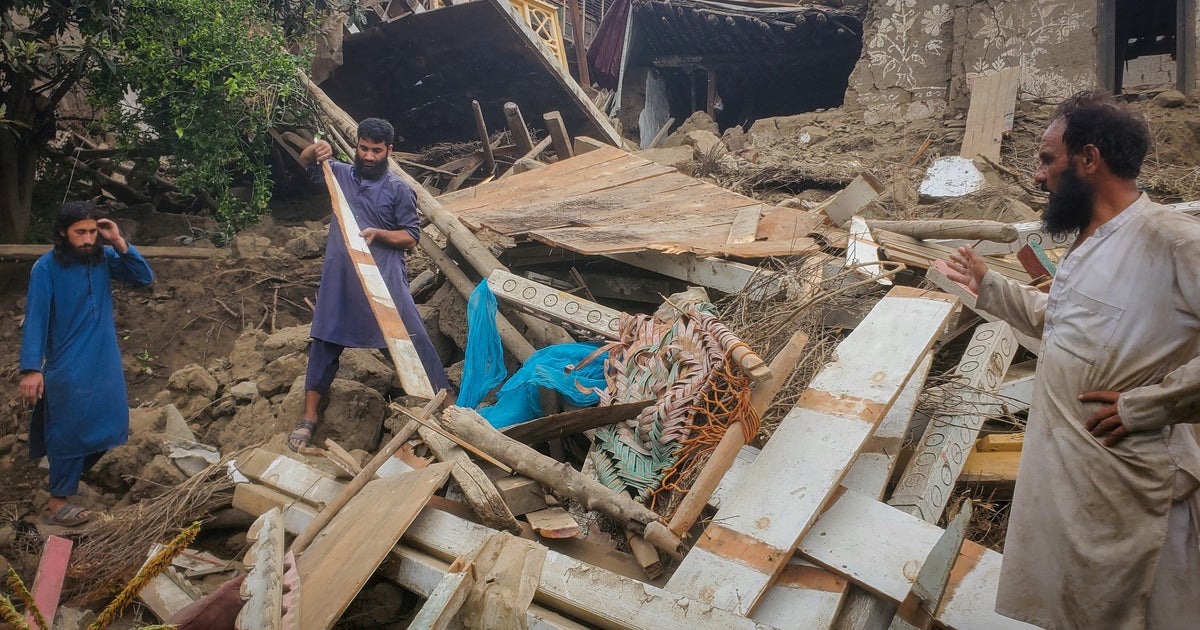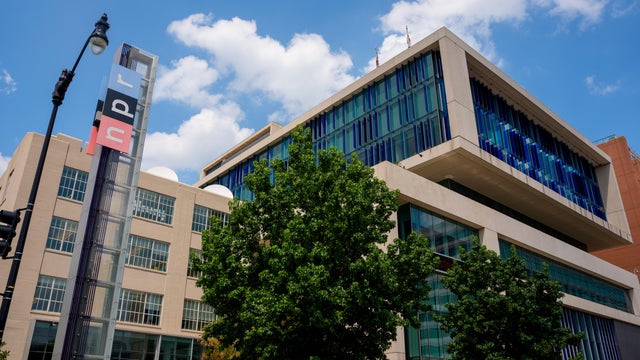

No response returned

Kabul, Afghanistan — A strong earthquake in far eastern killed more than 800 people and left at least 2,500 wounded as it destroyed numerous villages, a spokesman for the country's Taliban government said Monday. Spokesman Zabihullah Mujahid told journalists in Kabul that the vast majority of the casualties were in Kunar province, but that 12 people were killed and 255 injured in neighboring Nangarhar.
The quake struck several towns in Kunar province late on Sunday evening, near the city of Jalalabad in neighboring Nangahar province. The 6.0 magnitude quake struck at 11:47 p.m. local time (3:17 p.m. Eastern) and was centered 17 miles east-northeast of Jalalabad, the U.S. Geological Survey said. It was just five miles deep. Shallower earthquakes tend to cause more damage.
Several aftershocks rattled the region throughout the night, including a powerful, shallow 5.2-magnitude temblor just after 4 a.m., USGS data show. The first quake shook buildings from Kabul to Islamabad, the Pakistani capital some 230 miles away, for several seconds, journalists with the French news agency AFP said.
Video from Nangarhar showed people frantically digging through rubble with their hands, searching for loved ones in the dead of night, and injured people being taken out of collapsed buildings on stretchers and into helicopters. Villagers in Kunar gave interviews outside their wrecked homes.
Muhammad Jalal, 40, a resident of Ghaziabad village in northern Kunar, told TheNews' Sami Yousafzai in a telephone interview that he was jolted awake by the tremors and managed to escape moments before his room collapsed.
"I was lucky, but at least two members of my family died and four were injured," he said. "We spent the whole night looking for help, but we were helpless and hopeless." Jalal recalled hearing his uncle crying for help from under the rubble for two hours before his voice fell silent.
Video shared on social media showed a white-bearded man in an undershirt emerging from the ruins, consoling grieving women who had lost relatives. "This was the will of God. What can we do?" he told them.
Dr. Sharafat Zaman, a spokesman for the Taliban government's Health Ministry, said the toll was likely to rise as search and rescue work continued, noting that "several villages have been completely destroyed."
Rescue operations were still underway Monday and medical teams from Kunar, Nangarhar and the capital Kabul have arrived in the area, said Zaman.
The U.N. that it had rescue teams on the ground "delivering emergency assistance & lifesaving support." The Afghan Red Crescent that officials from the agency and "medical teams rushed to the affected areas and are currently providing emergency assistance to impacted families."
For Homa Nadir, the Deputy Head of the Red Crescent in Afghanistan, it seemed like "yet another disaster, hitting at the wrong time."
Nadir said the emergency health organization's information suggested at least three villages in Kunar had "been completely leveled" by the quake.
The disaster comes over four years after the in the immediate wake of a . But much of the Western world, including the U.S., has severed ties with the Taliban regime and halted financial assistance, so the country remains gripped by a humanitarian crisis and is one of the poorest nation's in the world.
Nadir told TheNews correspondent Holly Williams that the U.S. aid cuts ushered in under President Trump will hamper the relief effort.
"We're always expecting these disasters to happen, but it feels like in Afghanistan, people really don't get a chance to just breathe," she said.
Jalalabad is a bustling trade city due to its proximity with neighboring Pakistan and a key border crossing between the countries. Although it has a population of about 300,000 according to the municipality, it's metropolitan area is thought to be far larger. Most of its buildings are low-rise constructions, mostly of concrete and brick, and its outlying areas include homes built of mud bricks and wood. Many are of poorly built.
Jalalabad also has considerable agriculture and farming, including citrus fruit and rice, with the Kabul River flowing through the city.
Afghanistan is located near the junction of the Eurasian and Indian tectonic plates and it is often struck with earthquakes.
A magnitude 6.3 temblor , along with strong aftershocks. The Taliban government estimated that at least 4,000 perished. The U.N. gave a far lower figure of about 1,500. It was the deadliest natural disaster to strike Afghanistan in recent memory. More than 90% of those killed were , UNICEF said.
In , a 5.9 magnitude earthquake struck parts of eastern Afghanistan, killing more than 1,000 people and injuring more than 1,500 others.





